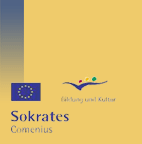Integration of technical education in primary education
6. Conclusion
From the above we can
conclude some directives for the results of this project:
►Self-confidence and
well-being of a teacher in relation to technology increases his/her practice
experience;
►children must be
challenged to develop themselves;
► we have to meet the
basic conditions of: being curious, having self-confidence and being
emotionally free;
►being adaptive (i.e.
taking into account the uniqueness of each child);
► technical education
can be best executed while linked to other subjects in order to make it
meaningful for children;
► technical education
must have a clear place in a continuous learning line;
► it must be renewing;
► it must give space
for creativity for the child AND teacher ;
► finally, obstacles to
the introduction of technical education must be removed;
Inventarisatie van techniekwerkplaatsen en technieklokalen
op verschillende locaties.
NOTES
¹) Geert Hofstede, Allemaal Andersdenkenden, Londen 1991
Translated in many languages.
English: Cultures and Organizations, Software of the Mind, London 1991; or
later editions
²) C. Vreugdenhil, Pre and
basic competencies for primary school teachers, provisional paper in Dutch,
EDUCOM, The Hague 2003, p.2.
³), N. Fijma, B. Pompert,
Naar een vormende lerarenopleiding door betekenisvolle activiteit²) 4) C.
Vreugdenhil, Pre and basic competencies for primary school teachers,
provisional paper, EDUCOM, The Hague 2003, p.14
en, paper January 2003
5)Falco de Klerk Wolters, A
PATT study among 10-12 year old students in th Netherlands, Journal of
Technology Education, Vol 1, Nr 1 , Fall 1989











